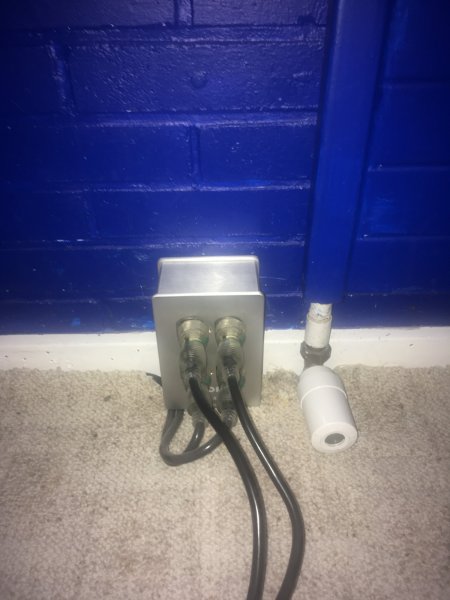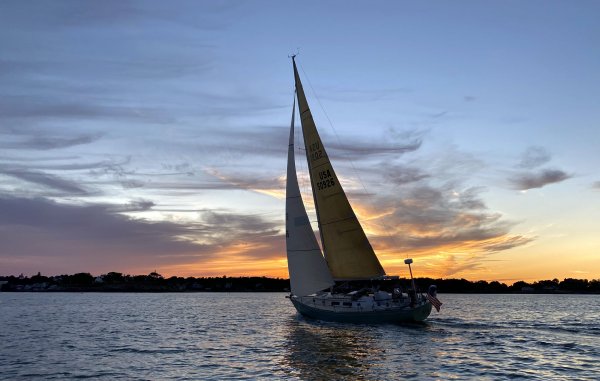As an interim step before my electrician comes back to install the four dedicated circuits, I created a hybrid between David's idea of that Hubbell Quad, and what will eventually be installed.
Following some advice from member PWRMAX, I made up my own boxes and installed the Hubbell industrial isolated ground duplex receptacles that David recommended and replaced the Furutech IEC connectors I had at the ends of the JPS Labs In-Wall cable coming through the floor from my main panel. The JPS wire is so thick that it necessitated the use of pigtails and wire nuts to connect to the receptacles.
Prior to this, I had simply plugged my five Ching Cheng power cords into extension cords going to regular outlets. That alone was an improvement over the JPS cable/Furutech in terms of natural resolution and timbre. See post #1349 above.
So far, using the Hubbell outlets with the JPS wire to dedicated circuits has done two things. 1) Dynamics have improved I suppose because each amp is now on its own dedicated circuit but I also no longer need the extension cords. 2) the bass quality is fuller, warmer, a bit looser.
Some feel the JPS Labs wiring is a bit colored and I don't know if the new Hubble receptacles will change over break in time, but I am surprised by how much the sound is dependent on the IEC connector, the power cords, the dedicated circuits and perhaps the in wall wires.
This is an interim step to determine if I will use stranded 10/2 wires encased in metal to the Hubbell receptacles, or if I will keep the JPS Labs wiring. I am leaning toward four separate dedicated circuits to the four Hubbell receptacles which will prevent the need for splices, particularly for the three front end outlets. I don't want to have to buy another 20' of the JPS wire, and it is quite difficult to work with.
Does anyone have any opinions about the JPS wire? With some more listening, I hope to identify how much it is contributing to the overall sound.
Thanks to ddk and MAXPWR for the continuing advice.
I should add that I am very impressed with the Ching Cheng power cords and their construction. The molded plastic is excellent, and their grip is superb. The Furutech IECs tended to loosen over time.
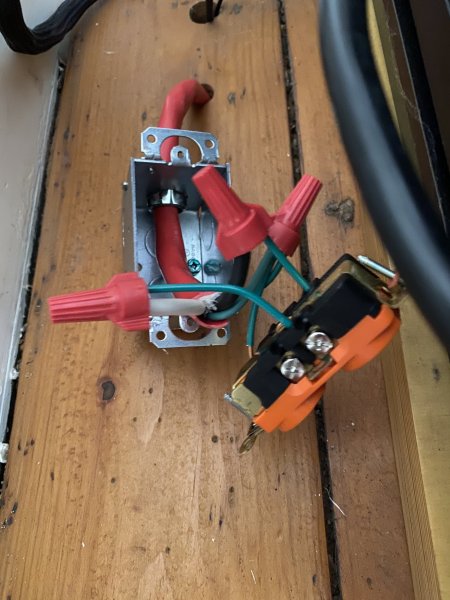
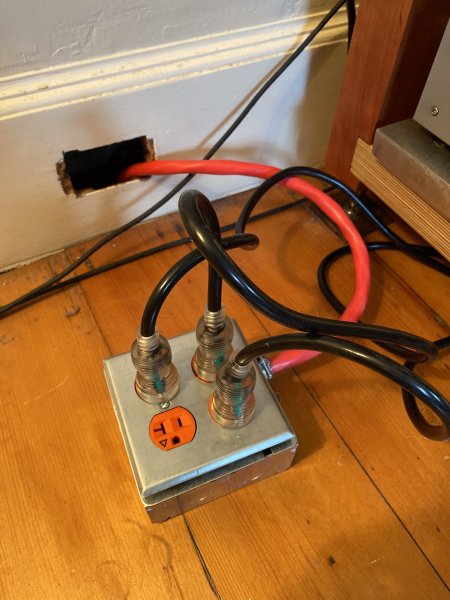
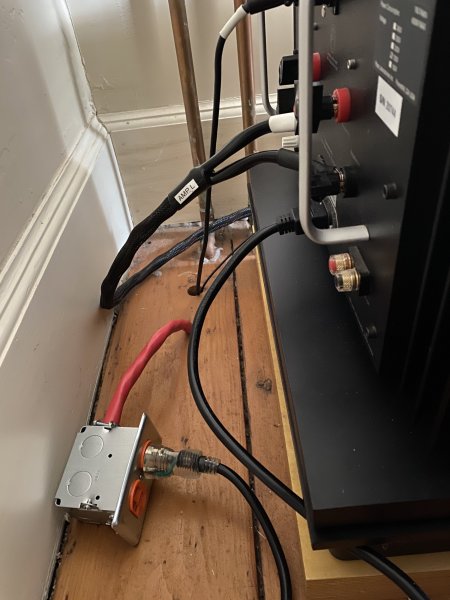
Following some advice from member PWRMAX, I made up my own boxes and installed the Hubbell industrial isolated ground duplex receptacles that David recommended and replaced the Furutech IEC connectors I had at the ends of the JPS Labs In-Wall cable coming through the floor from my main panel. The JPS wire is so thick that it necessitated the use of pigtails and wire nuts to connect to the receptacles.
Prior to this, I had simply plugged my five Ching Cheng power cords into extension cords going to regular outlets. That alone was an improvement over the JPS cable/Furutech in terms of natural resolution and timbre. See post #1349 above.
So far, using the Hubbell outlets with the JPS wire to dedicated circuits has done two things. 1) Dynamics have improved I suppose because each amp is now on its own dedicated circuit but I also no longer need the extension cords. 2) the bass quality is fuller, warmer, a bit looser.
Some feel the JPS Labs wiring is a bit colored and I don't know if the new Hubble receptacles will change over break in time, but I am surprised by how much the sound is dependent on the IEC connector, the power cords, the dedicated circuits and perhaps the in wall wires.
This is an interim step to determine if I will use stranded 10/2 wires encased in metal to the Hubbell receptacles, or if I will keep the JPS Labs wiring. I am leaning toward four separate dedicated circuits to the four Hubbell receptacles which will prevent the need for splices, particularly for the three front end outlets. I don't want to have to buy another 20' of the JPS wire, and it is quite difficult to work with.
Does anyone have any opinions about the JPS wire? With some more listening, I hope to identify how much it is contributing to the overall sound.
Thanks to ddk and MAXPWR for the continuing advice.
I should add that I am very impressed with the Ching Cheng power cords and their construction. The molded plastic is excellent, and their grip is superb. The Furutech IECs tended to loosen over time.



Last edited:


